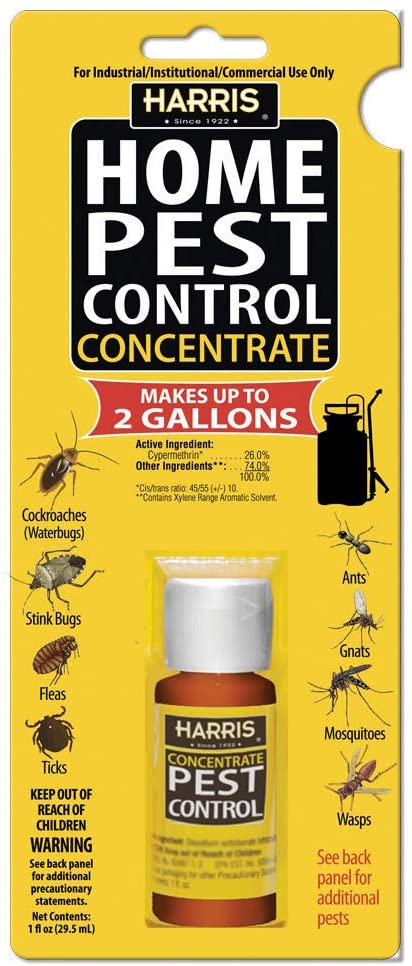Bed Bug Treatment Failure: Contrasting Chemical Vs. Non-Chemical Solutions
In the world of parasite control, specifically when taking care of the consistent issue of bed pests, the selection in between chemical and non-chemical treatment solutions can be an essential one. Both approaches provide distinctive advantages and drawbacks, affecting variables such as performance, safety and security factors to consider, and total price. By taking a look at the nuanced details of each approach, a clearer understanding of which course to go after in attending to a bed insect problem can be obtained.
Performance of Chemical Treatments
Chemical treatments for bed bug problems have actually been widely recognized for their powerful and rapid effectiveness in eliminating these bugs. When considering the performance of chemical treatments, it is crucial to recognize that they can provide a complete and fast solution to a bed insect issue.
In addition, chemical treatments have the advantage of supplying residual effects, indicating that they can remain to remove bed insects also after the initial application. This recurring action is especially useful in combating any type of prospective re-infestations. In addition, the fast activity of chemical treatments can bring relief to people dealing with severe bed bug invasions, enabling them to gain back control of their space rapidly.
Security Interest In Chemical Solutions
One critical element that calls for careful consideration when utilizing chemical remedies for bed insect therapy is ensuring the safety of occupants and the atmosphere. Direct exposure to certain chemicals utilized in bed insect treatments can lead to respiratory system concerns, skin irritation, or various other adverse reactions, particularly in people with pre-existing problems or sensitivities.
In addition, the ecological influence of chemical remedies is one more significant factor to consider. Some pesticides made use of in bed pest therapies may be dangerous to valuable pests, wildlife, and environments if they leach right into the dirt or water supply. It is necessary to make use of chemical therapies deliberately, complying with security standards, and considering much less toxic choices to mitigate these risks and make certain the efficient and risk-free management of bed pest problems.
Advantages of Non-Chemical Strategies
Thinking about the potential safety and security worries and ecological impact connected with chemical services for bed pest treatment, discovering non-chemical strategies presents an encouraging alternative with a number of distinctive benefits. Non-chemical techniques supply a much safer alternative for households, especially those with kids, individuals, or animals delicate to extreme chemicals. These approaches eliminate the threats of direct exposure to poisonous substances, reducing the capacity for unfavorable health results. Moreover, non-chemical treatments are eco-friendly, as they do not add to air or water contamination, making them a sustainable option for pest control.
Furthermore, non-chemical solutions can be efficient in targeting bed insects, including hard-to-reach locations where chemical therapies may not pass through. Approaches such as warmth therapy, vacuuming, steam cleaning, and cushion coverings supply extensive removal without making use of unsafe chemicals. Moreover, non-chemical methods can be much less disruptive, calling for marginal preparation and permitting quicker reentry right into dealt with locations. Generally, going with non-chemical bed insect therapy techniques not only focuses on safety and security and ecological defense yet likewise makes certain comprehensive and effective insect control.
Limitations of Non-Chemical Treatments

In addition, non-chemical therapies usually require several applications to accomplish successful eradication. This insect prevention house can be time-consuming and might get rid of mice not constantly assure complete removal of all bed pests and their eggs, especially in concealed or hard-to-reach locations.
In addition, the success of non-chemical therapies heavily relies on appropriate implementation and thoroughness, which can be challenging for individuals without expert expertise. Poor application of non-chemical techniques might result in insufficient elimination, resulting in consistent problems and the need for additional treatments.
As a result, while non-chemical therapies have their benefits, it is crucial to acknowledge these restrictions and consider them when figuring out one of the most reliable technique for taking care of bed bug infestations.
Expense Comparison: Chemical Vs. Non-Chemical Options
Given the constraints related to non-chemical therapies, a crucial aspect to assess in the context of bed bug management is the cost contrast in between chemical and non-chemical alternatives. Chemical treatments normally entail the application of pesticides by professionals, which can range from $250 to $900 per room, depending on the intensity of the infestation and the dimension of the location to be dealt with. On the other hand, non-chemical therapies like warmth therapy or steam can be more pricey, with prices ranging from $1,000 to $6,000 for an entire home. While the initial expense of chemical navigate to this website therapies may seem lower, numerous therapies may be called for to totally eliminate the problem, possibly enhancing the total expense. On the other hand, non-chemical alternatives might provide an extra environment-friendly and lasting solution, although they can be cost-prohibitive for some individuals. Ultimately, when thinking about the price of bed insect therapy options, it is very important to evaluate the ahead of time costs versus the performance and lasting sustainability of the selected method.
Conclusion

Thinking about the potential security worries and ecological effect linked with chemical services for bed pest treatment, checking out non-chemical approaches offers an encouraging choice with a number of unique benefits.Given the limitations associated with non-chemical therapies, an important aspect to evaluate in the context of bed insect management is the price comparison in between chemical and non-chemical alternatives. In contrast, non-chemical therapies like heat treatment or vapor can be a lot more expensive, with expenses ranging from $1,000 to $6,000 for a whole home. While the initial price of chemical treatments may appear reduced, numerous treatments might be called for to completely remove the infestation, potentially increasing the total expense.In verdict, when comparing chemical and non-chemical bed insect treatment choices, it is important to think about efficiency, security, advantages, constraints, and price.